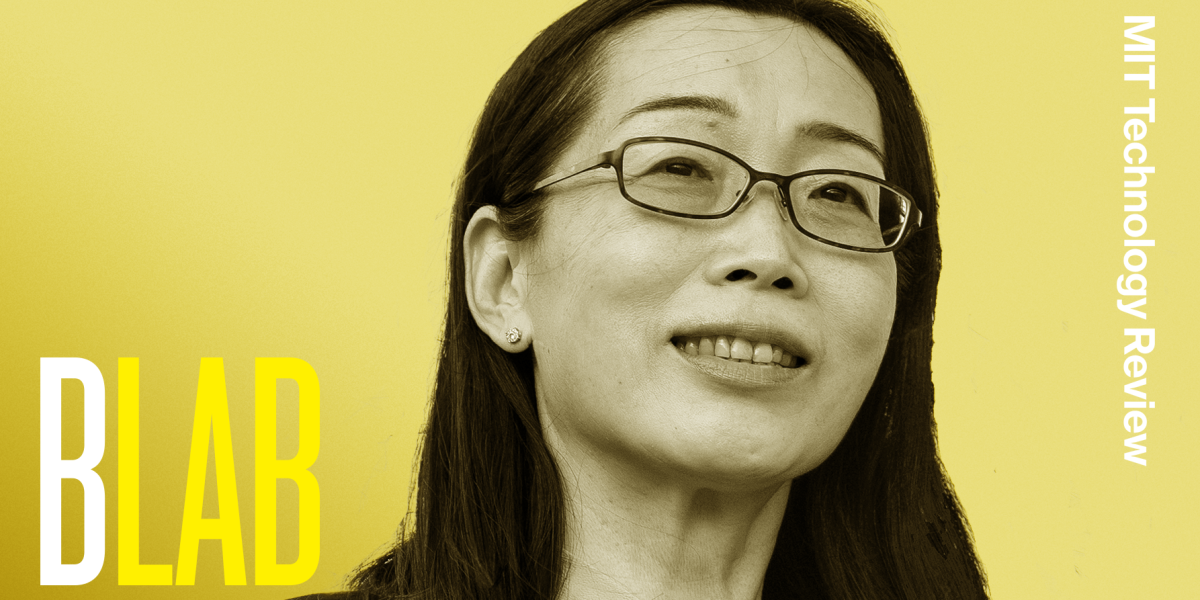Scientists advance cloud-seeding capabilities with nanotechnology
Since the 1940s, scientists have studied ways to increase rainfall with the goal of increasing precipitation in arid and semi-arid climates. Today, that endeavor is making incredible leaps and bounds as scientists and engineers apply nanotechnology to improve the effectiveness of cloud seeding.
“The global water shortage has continuously intensified by rapid population growth and economic development around the world. Conventional water resources such as rivers, lakes, and groundwater have become very limited, which is driving scientists and engineers to look for alternative water resources,” says Dr. Linda Zou, a professor of civil and environmental engineering at Khalifa University of Science and Technology.
Dr. Zou leads a groundbreaking research project using nanotechnology to develop cloud-seeding materials. Cloud seeding is a form of weather modification that mimics what naturally occurs in clouds but enhances the process by adding particles that can stimulate and accelerate the condensation process. However, Dr. Zou explains, “The cloud-seeding materials used today have been around for many decades. The information and techniques are out of date and their effectiveness is not well understood.”
Cloud seeding has strict requirements. To be successful, scientists need the right air temperature, the right humidity, a surface that attracts water and keeps it, and then the correct size material to allow condensation to form on the particle.
“Through the advancement in nanotechnology and nanoscience, nowadays we are working to design and engineer cloud-seeding materials with optimal properties to ensure water vapor condensation will occur effectively and maximize the rainfall achieved,” explains Dr. Zou.
Related materials
- UAE Research Program for Rain Enhancement Science
- New UAE cloud seeding test in Texas shows ‘promising results’, The National News, August 15, 2021
Full transcript
Laurel Ruma: From MIT Technology Review, I’m Laurel Ruma, and this is Business Lab. The show that helps business leaders make sense of new technologies coming out of the lab and into the market place.
Our topic today is cloud seeding to increase rainfall. Although cloud seeding has been around since the 1940s, climate change and population growth are driving scientists to take a closer look at the technology, which could offer a viable cost-effective supplement to existing water supplies, particularly in arid and semi-arid regions, like the United Arab Emirates.
To help advance the science, in 2015 the UAE government launched a new initiative, the UAE Research Program for Rain Enhancement Science. The aim is to get other innovative projects from scientists in the field of rain enhancement from all over the world, with the winning ideas obtaining a grant of $5 million to work and improve on concepts for a period of three years. Two words for you: nanoengineered materials.
My guest today is Dr. Linda Zou, who is a professor of civil and environmental engineering at Khalifa University of Science and Technology. Dr. Zou leads a groundbreaking research project using nanotechnology to develop cloud seeding materials.
She was awarded a grant by the UAE Research Program on rain enhancement science from 2016 to 2019. Dr. Zou’s research interests include applying nanotechnology and membrane science to the development of low energy and high efficiency novel desalination and water purification solutions. This podcast is produced in partnership with the UAE Pavilion Expo 2020 Dubai. Welcome, Dr. Zou.
Dr. Zou: Thank you, Laurel.
Laurel: You were one of the first scientists in the world to explore the use of nanotechnology in cloud seeding. Why are you interested in this type of research?
Dr. Zou: The cloud seeding materials used today have been around for many decades. The information and techniques are out of date and their effectiveness is not well understood. Through the advancement in nanotechnology and nanoscience, nowadays we are working to design and engineer cloud seeding materials with optimal properties to ensure water vapor condensation will occur effectively and maximize the rainfall achieved.
Laurel: Cloud seeding is a form of weather modification that mimics what naturally occurs in clouds but enhances the process by adding particles that can stimulate and accelerate the condensation process. Could you explain in more detail how cloud seeding works?
Dr. Zou: In the natural water cycle on the earth, the sun irradiates on the surface of our planet and the water on the surface is evaporated by the heat as the vapors. The tiny vapors rise into the atmosphere without condensation nuclei, which are small particles. They remain as vapors in the air and move higher and further.
The natural occurring condensation nuclei are such as dust particles, volcano flash, or pollens. Unfortunately, such material is unpredictable, where and how much available. On the other hand, cloud seeding practice is to release artificial seeding materials as nuclei to initiate the water vapor in the cloud to condense into droplets and promote the formation of large droplets until they grow big enough to fall as rain.
The key factors of a successful cloud seeding operation include, first, identifying the suitable cloud for seeding. Second, having the efficient seeding material for water droplet formation.
Laurel: To successfully cloud seed, you need a number of things: the right air temperature, the right humidity, a surface that attracts water and keeps it, and then the correct size material to allow condensation to form on the particle. Is that correct?
Dr. Zou: Yes. Yes.
Laurel: Although cloud seeding has been around for decades, how does today’s technology move it toward a greater success rate?
Dr. Zou: As we know, the global water shortage has continuously intensified by rapid population growth and economic development around the world. Conventional water resources such as rivers, lakes, and groundwater have become very limited, which is driving scientists and engineers to look for alternative water resources.
Atmospheric water is one such alternative resource. At the moment, all possible solutions that could resolve the water shortage issue should be examined carefully.
Nanotechnology can engineer material and design the material with well controlled size, shapes, and properties. So it has a huge possibility to improve its efficiency.
Laurel: Your research focuses on the cloud seeding material itself, specifically the nanomaterials as you mentioned, which is a more effective tool in generating rain from existing clouds. What are conventional cloud seeding materials, and then how does nanotechnology come into play?
Dr. Zou: The conventional cloud seeding materials include mostly hydroscopic salt mixture, which can change from salt crystals into water droplets at the right condition. The delivery of this salt is to vaporize them by ignition by a flare device. This salt vapor then will recondense as very small particles. Because the process is random and uncertain, the form and size of the particle cannot be controlled and most are probably too small to be effective cloud seeding materials.
The conventional cloud seeding material can only be activated at a very high relative humidity in atmosphere in the cloud, such as greater than 75% relative humidity. In my project, we have changed the surface of the material to make it more reactive so it can work at a lower and wider relative humidity to make it more likely to happen.
To achieve this, we use the nanotechnology to deposit titanium dioxide nanoparticles as a shell layer and sodium chloride crystal core. This nanoengineered shell core structured material can be activated at much broader relative humidity conditions such as about 65%. Because the coated nanolayers are more hydrophilic and porous, the water can be absorbed easily and increase the local relative humidity of the crystals and increase the probability of forming water droplets. So it is a synergistic effect.
Laurel: You’ve also developed another kind of technology, ice nucleating particles. How do those compare to cloud seeding materials?
Dr. Zou: Yes. As you know, cold clouds with sub-zero temperatures are also present in the atmosphere. They are made of many super cooled water vapors, so although they are below zero, they remain as vapor. Once such cloud encounters the ice nucleation particles, they rapidly form a large number of ice crystals and bypass the liquid water phase. So they form super cool vapor and crystallize into ice particles.
Ice nucleation is important. It will initiate from the thin water layer formed on the surface of the ice nuclease, and the ice will grow rapidly at the expense of the water vapor in the cloud. We designed and fabricated a porous nanocomposite of 3D reduced graphite oxide and silica dioxide nanoparticles. This material can initiate ice nucleation followed by rapid growth starting from a temperature of minus 80 degrees. This temperature is much higher than most other known ice nucleate material. Often they require minus 25 degrees or even lower.
Laurel: This is very critical because the cloud seeding materials go very high up into the atmosphere where it is very cold, correct?
Dr. Zou: Yes. The higher you move up to the atmosphere, quickly moving into subzero and very cold.
Laurel: In the past, one of the challenges scientists encountered when researching cloud seeding was the lack of a simulation environment. You took this on as part of your research. What did you develop and how will it facilitate future research?
Dr. Zou: It is a challenge area and I have collaborated with the Cloud Microphysics Modeling International team. The innovation of my project is the characteristics data we obtained from the experiment. This data describing my new seeding materials property and their interactions in atmosphere. So we can use them as input to develop one-dimensional and three-dimensional modeling of precipitation enhancement caused by cloud seeding, and the results prove quite successful.
Laurel: Could you describe that weather chamber that you used in your experiments? What are the challenges with then deploying the material out in the real world?
Dr. Zou: The cloud chamber is a three-dimensional experimental environment. They vary in size. There’s a small one, a medium one, and a large one. The small one could be 20 meters and the large one could be like a building. I used an eight cubic meter chamber with controlled humidity and temperature. A device at the top of the chamber releases the seeding materials.
Immediately after the seeding is released, the electronic equipment, which are electronic optical cameras, will quickly take many, many photos to record the image while the seeding material’s falling. Then we can later analyze at what stage the droplets formed and at what number and size of the droplets. We can do a spectrum analysis and to find out their vapor condensation, the droplet formation, and the size and the number of the droplets. Using this information is very good to compare the performance of different materials, and we did that extensively.
Laurel: Then in the real world where we don’t have this controlled chamber, it’s not quite as easy necessarily to measure that kind of success.
Dr. Zou: Yes, you are right. In the open environment, it’s more challenging.
Laurel: Your research signifies a milestone toward achieving greater water security in the world. What kind of effect can cloud seeding potentially have on a country, like the UAE, which typically only records four inches of rain in a year?
Dr. Zou: Yeah. UAE is in the arid climate zone, and the government has already taken the initiative of this UAE research program for re-enhancement science. We call them UAEREP [United Arab Emirates Research Program for Rain Enhancement Science]. My research work has been supported in their first cycle and received excellent worldwide exposure.
Today, together with the National Center of Meteorology of the UAE, we can see the application of these new seeding materials in real operations very quickly across UAE to increase the rainfall.
Laurel: Back to your technology, you filed a patent on the cloud seeding material itself. What are you working on now, and what are you thinking about next?
Dr. Zou: Yeah. One patent is filed on the titanium dioxide, sodium chloride material for warm cloud seeding, and another patent is filed for porous graphite oxide, silica dioxide, nano compensated for cold cloud seeding.
At the moment, I’m working collaboratively on a project to evaluate the effects of these materials in the open air. A team of pilots is conducting an investigation by releasing the seeding materials and in real time capturing and analyzing them. It’s very promising to know more about the effects of this seeding material.
On the other hand, I am also dedicated to the scale up of the production, reduce the cost, and the application of the materials. We are looking forward to moving the seeding materials from laboratory to the commercial venture for not only cloud seeding applications, but wider applications, such as different weather modification efforts, including agriculture or crop protection, hail, or storm suppression, and the artificial snow making at the ski resort. Yes, such type of applications.
Laurel: Certainly, a number of possible commercial ventures. You are also pursuing funding initiatives at this point too, for your research. Is that correct?
Dr. Zou: We want to move the materials, as I mentioned, from laboratory already and scale up, so it has a chance of reaching the market and to reach many different parts of the world as well, because there are so many countries worldwide that practice weather modification.
Laurel: Dr. Zou, thank you so much for being with us here on the Business Lab. This has been an absolute, fantastic conversation.
Dr. Zou: Thank you for having me.
Laurel: That was Dr. Linda Zou, a professor of civil and environmental engineering at Khalifa University of Science and Technology, who I spoke with from Cambridge, Massachusetts, the home of MIT and MIT Technology Review, overlooking the Charles River.
That’s it for this episode of Business Lab. I’m your host, Laurel Ruma. I’m the Director of Insights, the custom publishing division of MIT Technology Review. We were founded in 1899 at the Massachusetts Institute of Technology, and you can find us in print on the web and at events each year around the world. For more information about us and the show, please check out our website at technologyreview.com.
This show is available wherever you get your podcasts. If you enjoyed this episode, we hope you’ll take a moment to rate and review us. Business Lab is a production of MIT Technology Review. This episode was produced by Collective Next. Thanks for listening.
This podcast episode was produced by Insights, the custom content arm of MIT Technology Review. It was not written by MIT Technology Review’s editorial staff.




